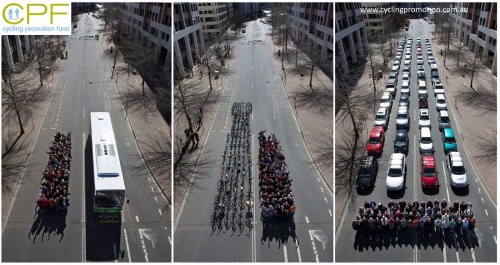
Last week, Brian Potwin (speaking on behalf of Commute Options) and I spoke for a brief few minutes during the public comment period of day 3 of the City of Bend’s Budget Committee meetings. The Committee is made up of all seven City Councilors along with a few citizen volunteers and similar to a regular City Council meeting, you get about the same amount of time to speak: 3 minutes.
Those three minutes were one more occasion to advocate for walk and bike project funding and Brian and I took full advantage. I don’t have our brief comments fully written out. They’re in outline form, but you get the idea.
What was encouraging was the overtly positive feedback we received from both Nathan Boddie and Barb Campbell, both new to the Council. Casey Roats mentioned his doubts about Bend living up to the examples cited for increased bike mode share because we’re not a town that’s as dense as others. At the least though, his comments reflected a willingness to be engaged by the topic which means there could be opportunities to convince him of the need for Bend to spend to support active transportation.
Overarching Message
City needs to spend monies for better walk/bike pathways to encourage more walk and bike commuting to lower the number of single occupancy vehicles.
Spending on walk/bike infrastructure projects is money well spent
- Austin’s planned protected bike lane network is projected to increase the city’s traffic capacity by about 25,000 trips per day at about the same cost ratio as a single expressway widening – City of Austin’s Bike Plane update in 2014
- One mile of roadway planned through Golden Gate Park is 1,283 times more expensive to San Franciscans than one mile of protected bike lane – SF Bicycle Coalition
- It’s cheaper than traditional car-centric transportation projects
- It can move more people in the same amount of space
(see inset picture above; it was distributed to Committee members)
- after New York City installed a protected bike lane on Columbus Avenue, bicycling increased 56 percent on weekdays, crashes decreased 34 percent, speeding decreased, sidewalk riding decreased, traffic flow remained similar, and commercial loading hours/space increased 475 percent. – New York City Department of Transportation
- Those who walk and bike have the least impact on the roadways condition than any other form of transit which translates into lower maintenance costs
Those who use bikes or walk aren’t getting a free ride now.
- Most of the street maintenance budget comes from the general fund, which is mostly made up of property taxes
- 2/3 of street maintenance budget is coming from other sources than gas taxes, licensing and registration fees
- Those who drive cars aren’t funding road maintenance needs alone; everyone pays
- Pay for $80Mill roads maintenance shortfall with a $.10/gallon gas tax, and a studded tire fee
Will protected bike lanes be used if the City of Bend invests in them?
- After buffered bike lanes were installed on Philadelphia’s Spruce and Pine streets, bike traffic increased 95 percent and the number of people biking on the sidewalks fell 22 percent. – Bicycle Coalition of Greater Philadelphia, 2009
All the examples cited were references from this source:
http://www.peopleforbikes.org/statistics/category/protected-bike-lane-statistics
